5-Ingredient Easy Chickpea Pasta Recipe (Pasta e Ceci).
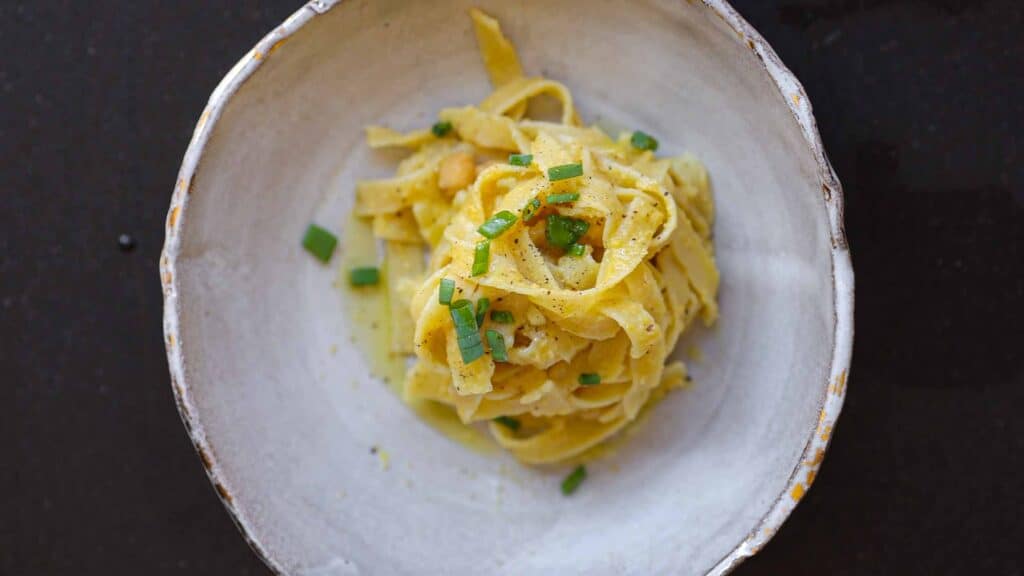
Flavorful.
Fiber-filled
Five-ingredient pasta.
If you’ve been following along on my adventures with my Italian cousin, Roberto (who taught me how to make the perfect aglio e olio and is my go-to guru for all traditional Italian pasta recipes), then you’ll know that this is the second great recipe for pasta he taught me to make:
Pasta e ceci or pasta and chickpeas.
This 5-ingredient chickpea pasta recipe is so delicious and easy to make, you’ll be making it every week for a quick meal or a weeknight dinner!
So, buckle up, and mangiamo!
Disclaimer: Some of the links in this post may be affiliate links for products I use and love. If you make a purchase after clicking one of those links, I may earn a small affiliate commission, perhaps enough to buy some extra gochujang or gochugaru 🙂
What is Pasta e Ceci?

Pasta e ceci literally translates into “pasta and chickpeas.” It is a classic Italian dish prepared in Southern and Central Italy with the aforementioned pasta and chickpeas and goes back thousands of years! It’s considered a pasta dish for the budget-conscious or the “cucina povera” (cuisine of the poor).
There are many versions of pasta e ceci, including recipes that incorporate chili flakes, tomato paste, cherry tomatoes, other fresh tomatoes or even a tomato sauce, fresh herbs, and parmesan cheese. This chickpea pasta recipe will include only the five ingredients that Roberto used in his version.
This creamy chickpea pasta recipe is so good and so easy to make, it’ll shoot right to the top of your list of recipes to add to your rotation. It’s a great way to get more plant-based protein and fiber into your diet, and it’s just an easy pasta to make for the whole family to enjoy. This particular chickpea pasta recipe used to be one of our Uncle John’s all-time favorite pastas!
One of the great things about this chickpea pasta recipe is that you can achieve a creamy sauce without heavy cream or any other kind of dairy. Trust me. It is easy, healthy, but also the ultimate comfort food dish!
Key Ingredients and Notes on Substitutions for Chickpea Pasta Recipe.
This chickpea pasta recipe has only five ingredients, so there isn’t much room (if any) for substitution. But let’s take a good look at each in turn and discuss:
Pasta.

As the name of this dish, pasta e ceci, suggests, this chickpea pasta recipe requires pasta! As with the aglio e olio, Roberto recommended using a long pasta. But instead of spaghetti, he used tagliatelle. I wasn’t able to find a dry tagliatelle by my house, but opted for a fettuccini, which is similar in length and width.
But as is often the case for these types of recipes, if all you’ve got on hand is a box of penne or macaroni, that’s not a good enough reason not to try this recipe! This recipe will be good with just about any pasta (rigatoni might be pushing it…), so go with what you got!
And of course, if you want to keep this recipe gluten-free, make sure to replace your regular pasta with gluten-free pasta!
Chickpeas.

The “ceci” in pasta e ceci specifically refers to chickpeas or garbanzo beans. When Roberto made this for us, he said that he would prefer making the chickpeas himself (i.e., rehydrating dry chickpeas and cooking them for hours), but… he made it using a can of chickpeas to save on time. So, consider this paragraph permission to use canned chickpeas for this chickpea pasta recipe!
Now, not all cans of chickpeas are created equal. Roberto used a can of salted chickpeas when he made this for us, but if you prefer to control the amount of salt in this recipe, look for an unsalted can of chickpeas.
Can you replace with some other beans for this chickpea pasta recipe? It won’t be called “pasta e ceci” anymore, but I see no reason why not? If you don’t have chickpeas on hand, go ahead and substitute with other white beans: navy beans, cannellini beans, and even kidney beans are all great choices for a quick and tasty substitution.
Extra Virgin Olive Oil.
It’s no secret that Roberto prefers extra virgin olive oil to just about any other source of fat (including butter). This chickpea pasta recipe is no exception to that! The recipe starts out with a fair amount of oil, the flavor and fattiness of which becomes crucial when creating a perfectly creamy pasta without any dairy.
Now, if you want to make an oil-free version, you can substitute the olive oil with vegetable broth. It won’t have quite the richness, nor will the sauce emulsify in the way it will when olive oil is included; however, it will still be a hearty and delicious pasta!
Garlic (Aglio).

This chickpea pasta recipe calls for garlic to help with adding a little flavor to the sauce. Not a lot of garlic–a couple garlic cloves will do. However, if you don’t like garlic (there are actually people who don’t like garlic–don’t judge them!), you can always skip the garlic.
Salt (Sale).

Because there are so few ingredients, this chickpea pasta recipe relies on properly salted pasta water for full flavor. Note, though, that Roberto did not add sea salt (you can also use kosher salt) to either the chickpeas (because he didn’t purchase a can of unsalted chickpeas) or the pasta, once incorporated in the sauce. So long as you generously salt your pasta water and add a pinch of salt to the chickpeas (if you purchase unsalted chickpeas), you will have plenty of flavor in this chickpea pasta recipe.
Step-by-Step Instructions for Making This Chickpea Pasta Recipe.
While there are only a handful of ingredients, there are some very specific steps for making this creamy chickpea pasta recipe.
Step 1.
To a medium pot, add your water and salt and bring it to a gentle boil.
Step 2.
To a large pan over medium-high heat, add olive oil (or vegetable broth if cooking oil-free), cooked chickpeas, and sea salt (if you’re using an unsalted can of chickpeas). Allow it to come to a nice sizzle.
Then, once your pasta water is boiling, add the garlic to the pan of chickpeas and place your pan on top of the pasta pot with the boiling water, in lieu of over an open flame. This will ensure that your oil picks up the flavors without burning the garlic. You will see little bubbles start to form after about 15 minutes. Remove the pan from the top of your pasta water pot and add pasta to your pasta water. Cook for 1 minute less than the allotted cooking time on the box to make al dente pasta.

Step 3.
While your pasta is cooking, remove half the cooked chickpeas from your pan and place them in a large and tall container (so you can use an immersion blender). Add 1/4 cup of the pasta water and then, using your immersion blender, blend until smooth. If you don’t have an immersion blender, you can place your cooked chickpeas into a large bowl, together with 1/4 cup pasta water and use a potato masher or hand mixer to blend them.




Step 4.
Pour the blended chickpea mixture back in the pan with remaining chickpeas. Once your pasta is finished cooking (1 minute before the instructions say they are done), drain the pasta and place it in the pan with the chickpeas. Using tongs, vigorously stir the pasta into the oil over low heat for about 1 minute. The agitation from stirring the pasta over the heat, together with the fat from the oil, is what will cause everything to come together and make this the creamiest dairy-free pasta ever.



Serve with an extra drizzle of olive oil or a crack of black pepper. I garnished my pasta with a little green onion, just for color, but you can garnish with whatever you like (fresh parsley, basil, oregano, etc.) or nothing!

Frequently Asked Questions.
What is pasta e ceci?
“Pasta e ceci” is Italian for “pasta and chickpeas” and refers to a classic Italian pasta dish featuring a creamy sauce made of chickpeas.
Is pasta e ceci vegan?
Pasta a ceci or pasta and chickpeas can be made vegan using dairy and egg-free pasta and omitting dairy from the sauce. Because the sauce is typically prepared by emulsifying blended chickpeas with pasta water and extra virgin olive oil, dairy is not necessary to create the creamy sauce for pasta e ceci.
Can pasta e ceci be made gluten-free?
Yes. If you replace regular pasta with gluten-free pasta, pasta e ceci can be entirely gluten-free.
Can I use canned chickpeas for pasta e ceci?
Yes, you can use canned chickpeas for pasta e ceci. Just watch out for salt content in canned beans.
Want More Pasta and Noodle Recipes?

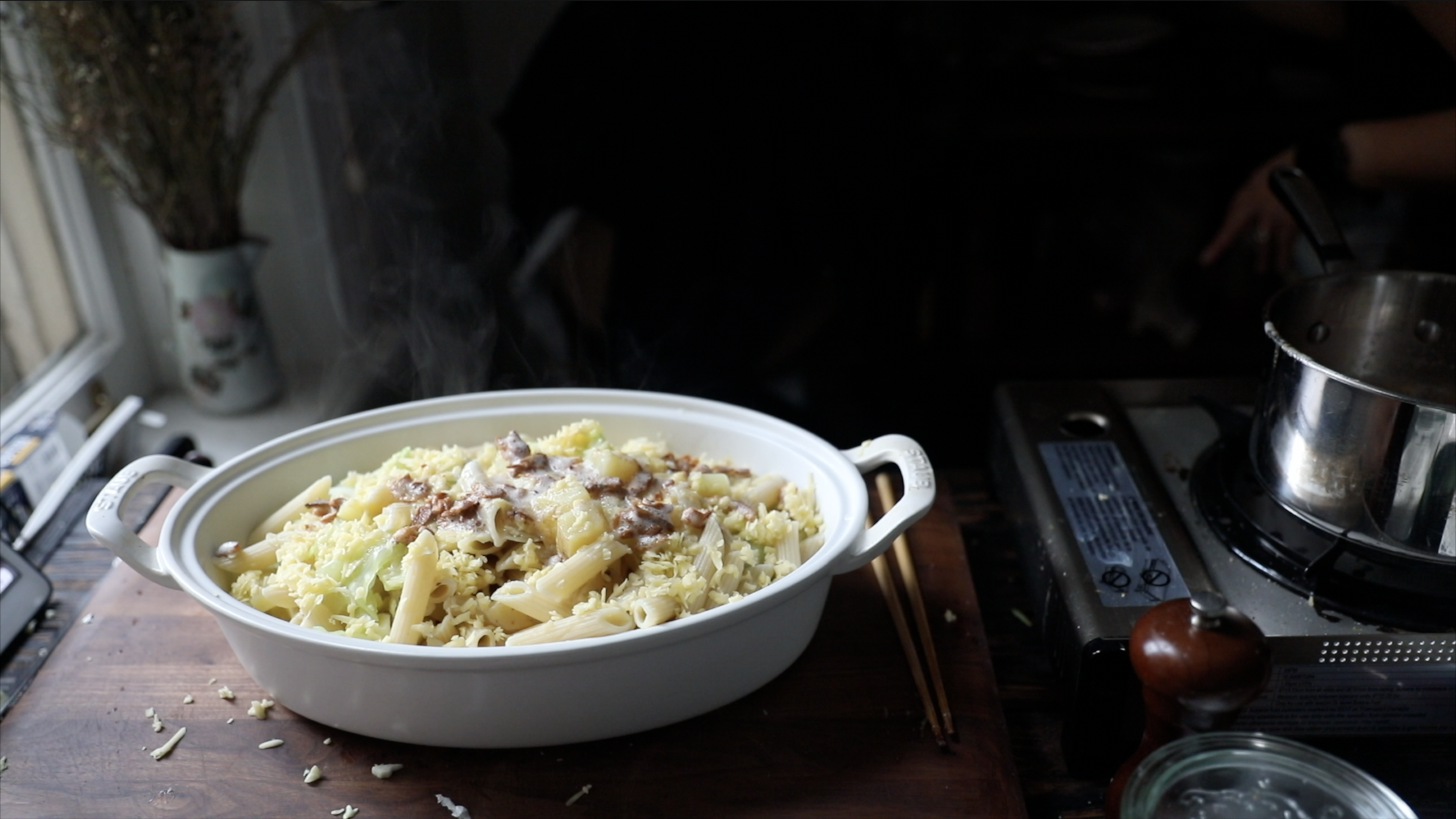


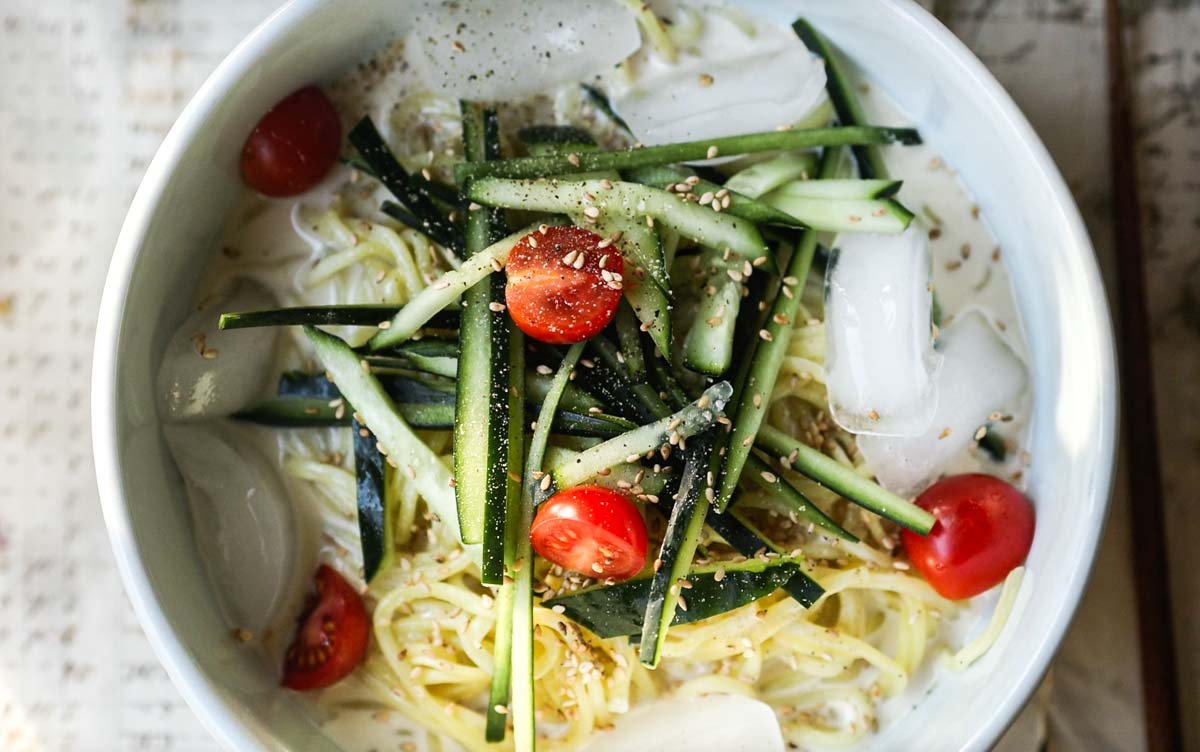
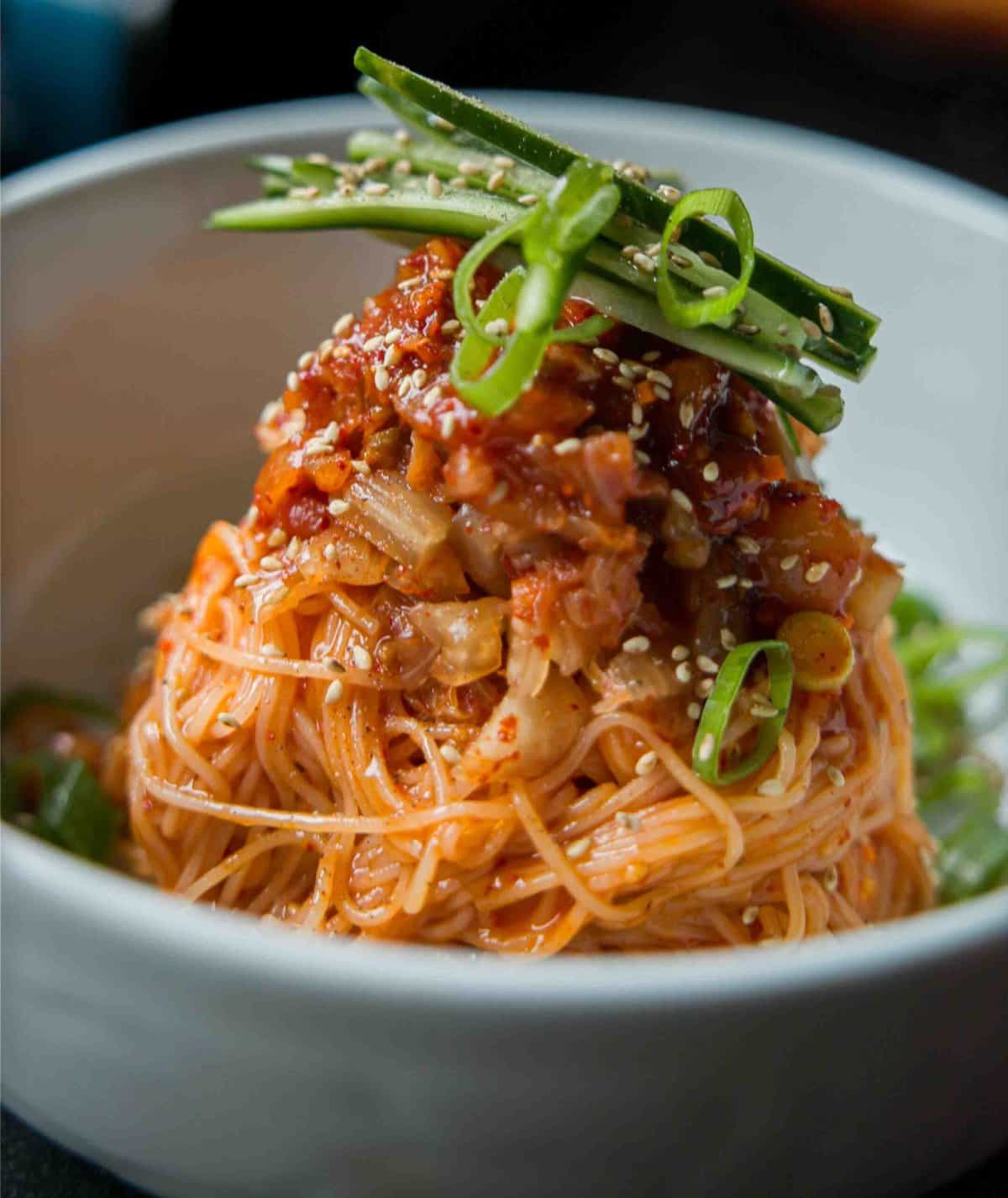
Recipe Card.
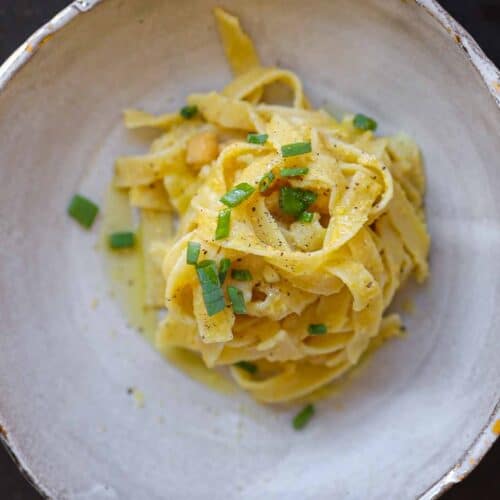
Chickpea Pasta (Pasta e Ceci)
Ingredients
- 2 tbsp course sea salt
- 1/4 cup extra virgin olive oil (substitute with vegetable broth to make this oil-free)
- 2 cloves garlic, thinly sliced
- 1 3/4 cup cooked chickpeas
- 1 lb dried tagliatelle or fettuccini (use gluten-free pasta to keep this recipe gluten-free)
Instructions
- To a medium pot, add your pasta water and salt and bring it to a gentle boil.
- To a large pan over medium-high heat, add olive oil (or vegetable broth if cooking oil-free), cooked chickpeas, and sea salt (if you're using an unsalted can of chickpeas). Allow it to come to a nice sizzle. Then, once your pasta water is boiling, add the garlic to the pan of chickpeas and place your pan on top of the pasta pot with the boiling water, in lieu of over an open flame. This will ensure that your oil picks up the flavors without burning the garlic. You will see little bubbles start to form after about 15 minutes. Remove the pan from the top of your pasta water pot and add pasta to your pasta water. Cook for 1 minute less than the allotted cooking time on the box to make al dente pasta.
- While your pasta is cooking, remove half the cooked chickpeas from your pan and place them in a large and tall container (so you can use an immersion blender). Add 1/4 cup of the pasta water and then, using your immersion blender, blend until smooth. If you don't have an immersion blender, you can place your cooked chickpeas into a large bowl, together with 1/4 cup pasta water and use a potato masher or hand mixer to blend them.
- Pour the blended chickpea mixture back in the pan with remaining chickpeas. Once your pasta is finished cooking (1 minute before the instructions say they are done), drain the pasta and place it in the pan with the chickpeas. Using tongs, vigorously stir the pasta into the oil over low heat for about 1 minute. The agitation from stirring the pasta over the heat, together with the fat from the oil, is what will cause everything to come together and make this the creamiest dairy-free pasta ever.
- Serve with an extra drizzle of olive oil or a crack of black pepper. I garnished my pasta with a little green onion, just for color, but you can garnish with whatever you like (fresh parsley, basil, oregano, etc.) or nothing!
Did you like this recipe? If so, please leave a rating and share it!

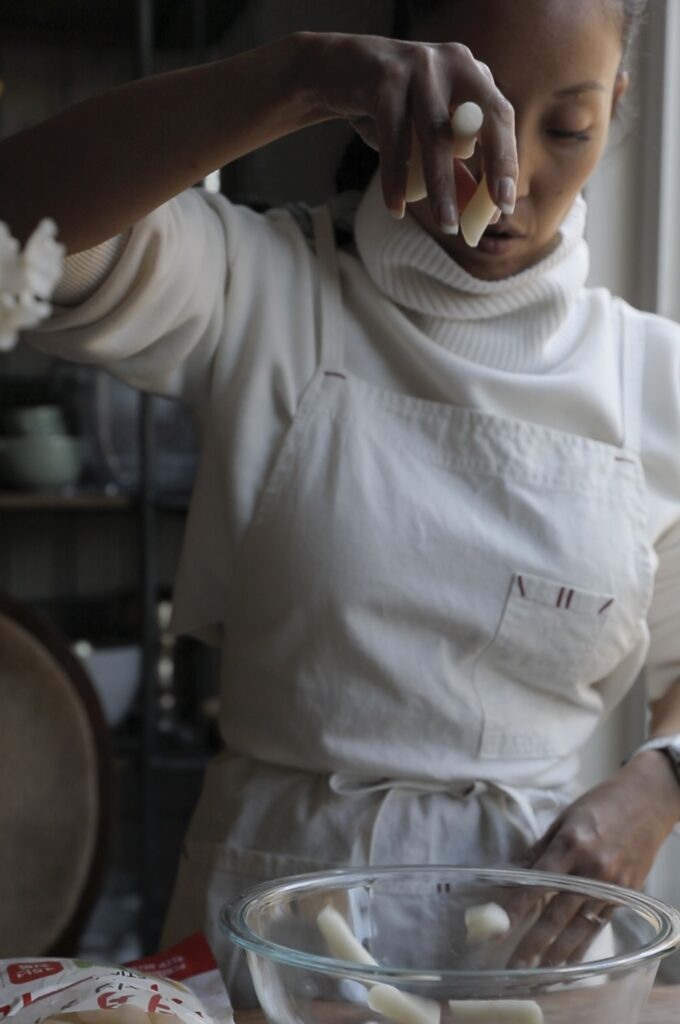


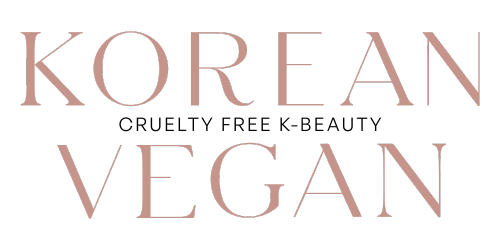

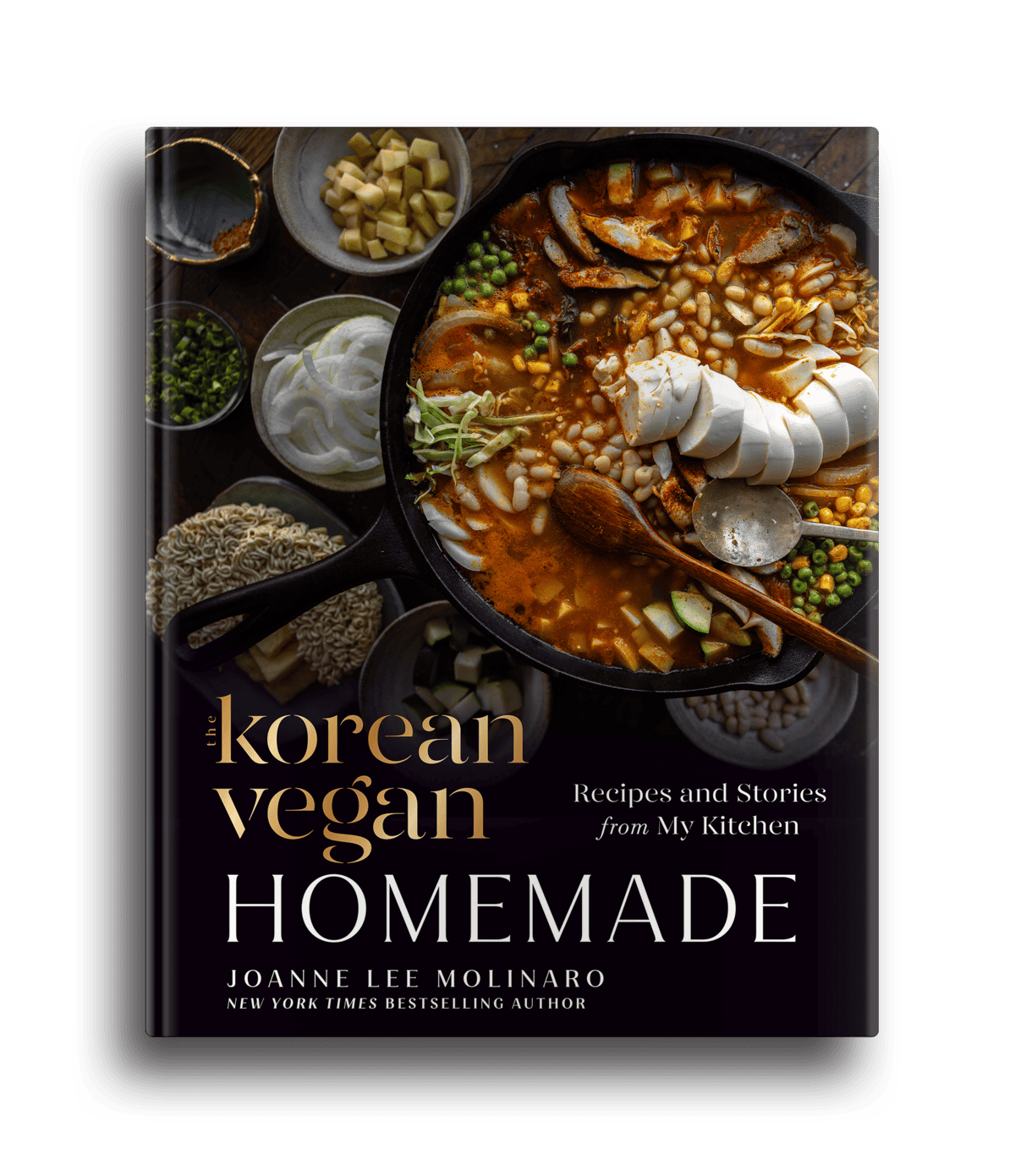
Made this today for dinner. So much more than the sin of its parts. Brava! Next time, I think I will add more chickpeas.
Sum not sin!!
This is an amazing recipe so quick and simple. And easily made vegan. Going on my regular to make list for sure!! I did put the garlic pieces in with with chickpeas to blend with the immersion blender and actually needed much more of the pasta water than is called for here but I was using a different pasta than is called for. Thank you.
Delicious! Perfectly garlicky and surprisingly creamy. I’m adding this to my rotation of go to meals!